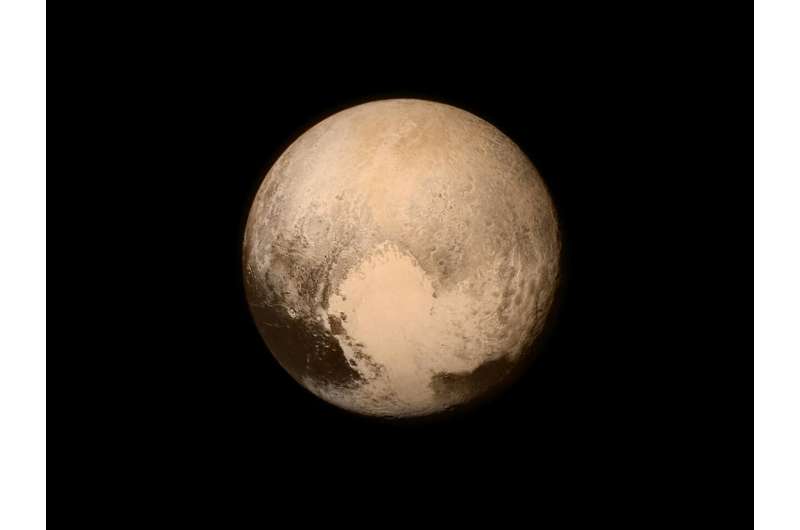
Pluto may have been downgraded from full-planet status, but that doesn’t mean it doesn’t hold a special place in scientist’s hearts. There are practical and sentimental reasons for that—Pluto has tantalizing mysteries to unlock that New Horizons, the most recent spacecraft to visit the system, only added to. To research those mysteries, a multidisciplinary team from dozens of universities and research institutes has proposed Persephone—a mission to the Pluto system that could last 50 years.
New Horizons rocketed past the Pluto system in 2015, which is now technically considered part of the Kuiper Belt. The mission collected data on the dwarf planet and its unique moon, Charon. Scientists have now had time to analyze the data from that mission, and it left them wanting more—in particular, data about some of the surface features that they observed.
Persephone has four main scientific questions it is designed to answer, according to a paper published back in 2021:
1) “How has the population of the Kuiper Belt evolved?”
2) “What are the particle and magnetic field environments of the Kuiper Belt?”
3) “How have the surfaces of both Pluto and Charon changed?”
4) “What are the internal structures of Pluto and Charon?”
That last one might be the most intriguing, as the answer for Pluto’s internal structure might be that it has a subsurface ocean despite being so far away from the sun. There is already some evidence for this, as Pluto appears to have an active surface, and an ice sheet called Sputnik Planitia could potentially be caused by a subsurface ocean. We don’t have enough data yet to prove it.
That is what Persephone is designed to provide. Unfortunately, with the unforgiving logic of orbital mechanics and current constraints on propulsion technology, any such mission would take multiple decades, even with a gravity assist from Jupiter.
The mission design for Persephone has been operational for almost 31 years, including a 28-year cruise phase and a three-year orbit period around Pluto and Charon. It could then have an extended operational mission to visit other Kuiper belt objects to help constrain the variance in the different kinds of objects in that massive section of space.
That travel time could be helped by the development of a more effective nuclear electric propulsion system, which could shave up to 2 years off it even with a heavier payload than currently planned for Persephone. Such a system has been described but might not be available for the planned 2031 launch date for Persephone on board an SLS rocket.
Persephone will take a suite of sensors, no matter its propulsion system, which can be “brought to bear on any and every object encountered during the mission,”. According to the flight plan, that would include Jupiter and its moons. These sensors include cameras, spectrometers, radar, magnetometers, and altimeters to meet the mission’s necessary science objectives.
A critical differentiator for the mission is that it is designed to be an orbiter rather than a flyby. According to the authors, much of the data needed to be collected would be infeasible with the short period a flyby would provide with the system. An orbiter would be able to stick around and collect data over the three-year period about both Pluto and Charon, including their active surface dynamics.
This proposal is just one of many mission proposals to the outer planets seeking further funding, and a preliminary estimate of $3bn puts it in the higher range of those missions. But if it is funded in some capacity, it could provide answers to the questions that New Horizons posed, even if it would take several decades to reach them.
Provided by
Universe Today
A new mission to Pluto could answer the questions raised by New Horizons (2024, November 14)
retrieved 15 November 2024
from https://phys.org/news/2024-11-mission-pluto-horizons.html
part may be reproduced without the written permission. The content is provided for information purposes only.